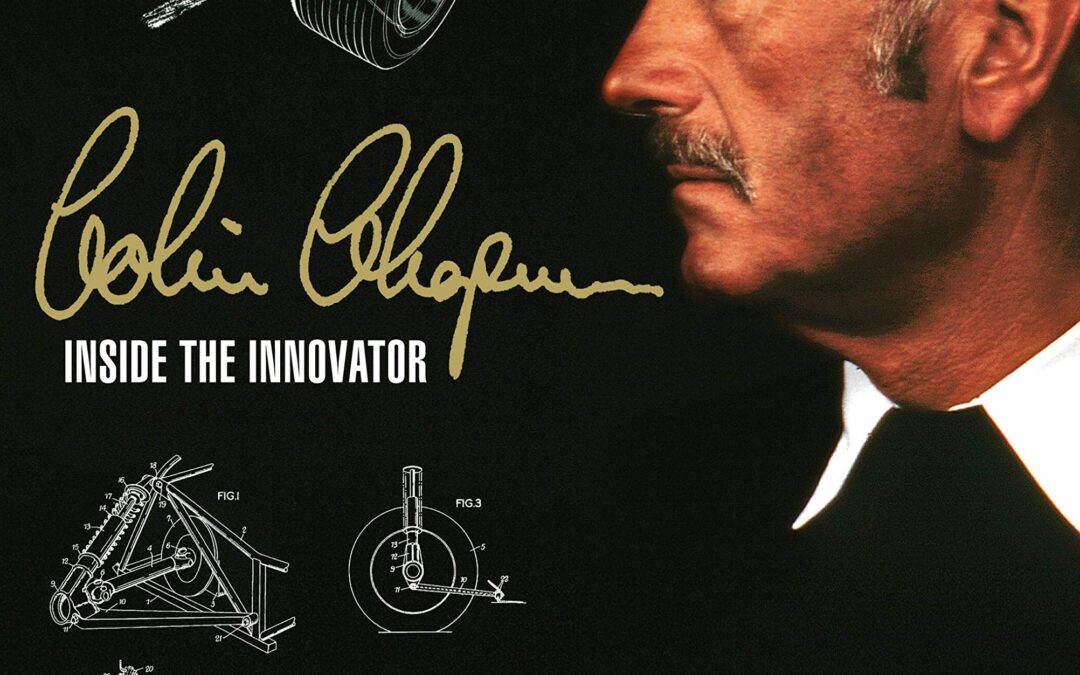
Renowned as one of the greatest creative forces in the world of the automobile, Lotus’s Colin Chapman (1928–82) left a mixed legacy. Was he an unparalleled innovator or an uninhibited exploiter of the uncredited ideas of others? In this landmark book, celebrated author Karl Ludvigsen gets to grips with the legend, digging deep beneath the skin of Chapman and his cars to explore and expose the motivations that drove this mercurial and controversial genius. Interviews with key figures in the Chapman story mesh with information from the author’s extensive archives to make this book a unique and compelling encounter between the engineer-innovator and the historian-investigator.
- Conceiving concepts: assessment of the man whom Keith Duckworth described as ‘the most brilliant conceptual engineer I’ve known’.
- Engine enterprise: recognising that he was, in his words, ‘not an engine man’, Chapman made the best of engines available to him, whether Ford 1172 side-valve, BRM H-16, Cosworth DFV V8 or Pratt & Whitney gas turbine.
- Transmission topics: this chapter moves through Lotus-designed ‘Queerbox’ transaxles, four-wheel drive, automatic clutch actuation and much more.
- Suspension sagas: from makeshift suspension ingenuity on his first Austin-based special to espousal of active suspension just before his death, Chapman gained and exploited an advanced understanding of a car’s underpinnings.
- Structure stories: Chapman’s accomplishments in this field are numerous. Best-known among them are his monocoque innovations, in glass-fibre for the Elite road car and aluminium for the F1 Type 25.
- Whittling weight: obsession with lightness was a Chapman mantra throughout his life. It contributed hugely to the success of his cars, occasionally at an expense of strength and safety that scared off some drivers.
- Aerodynamic adventures: Chapman enjoyed aerodynamics — ‘a very absorbing subject’ — and was at the forefront of major F1 developments in this area.
- Discovering downforce: early insights with wings and wedge-shaped bodies, exemplified by his Types 56 (Indycar) and 72 (F1), led ultimately to the pioneering breakthrough of traction-enhancing ground effect, which reached full flowering with the F1 Lotus 79.
- Ludvigsen gives special attention to Chapman’s exploits at Indianapolis, where he and his cars transformed the nature of America’s premier race with stunning innovations far from the safety of home.
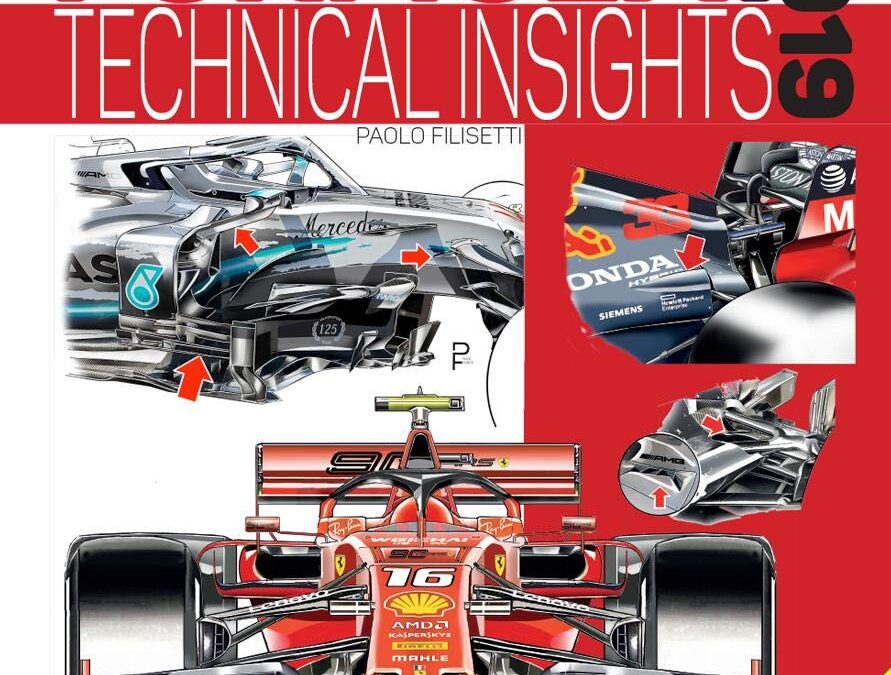
The cars that competed for the the 2019 World Championship are the protagonists of this annual, the first authored by Paolo Filisetti, an authoritative technical commentator and a contributor to leading Italian and international specialist magazines.
Through a rich series of colour drawings, the author reveals all the secrets concealed beneath the bodywork of the various cars, while presenting, in parallel, race by race, the principal technical and racing facts and episodes to characterise the Formula 1 season. Aerodynamic configurations – such as the various modifications to the front wings – cockpits and steering wheels, engines, suspension components, brakes, air flows above and below the cars, everything is meticulously described and illustrated in a book indispensable for all those wanting to get beneath the skin of the fascinating world of Formula 1, as well as a useful reference work for specialists.
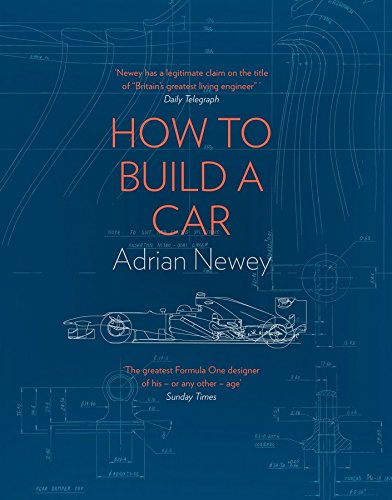
IN STOCK NOW!
The world’s foremost designer in Formula One, Adrian Newey OBE is arguably one of Britain’s greatest engineers and this is his fascinating, powerful memoir. How to Build a Car explores the story of Adrian’s unrivaled 35-year career in Formula One through the prism of the cars he has designed, the drivers he has worked alongside and the races in which he’s been involved. A true engineering genius, even in adolescence Adrian’s thoughts naturally emerged in shape and form – he began sketching his own car designs at the age of 12 and took a welding course in his school summer holidays. From his early career in IndyCar racing and on to his unparalleled success in Formula One, we learn in comprehensive, engaging and highly entertaining detail how a car actually works. Adrian has designed for the likes of Mario Andretti, Nigel Mansell, Alain Prost, Damon Hill, David Coulthard, Mika Hakkinen, Mark Webber and Sebastian Vettel, always with a shark-like purity of purpose: to make the car go faster. And while his career has been marked by unbelievable triumphs, there have also been deep tragedies; most notably Ayrton Senna’s death during his time at Williams in 1994. Beautifully illustrated with never-before-seen drawings, How to Build a Car encapsulates, through Adrian’s remarkable life story, precisely what makes Formula One so thrilling – its potential for the total synchronicity of man and machine, the perfect combination of style, efficiency and speed.
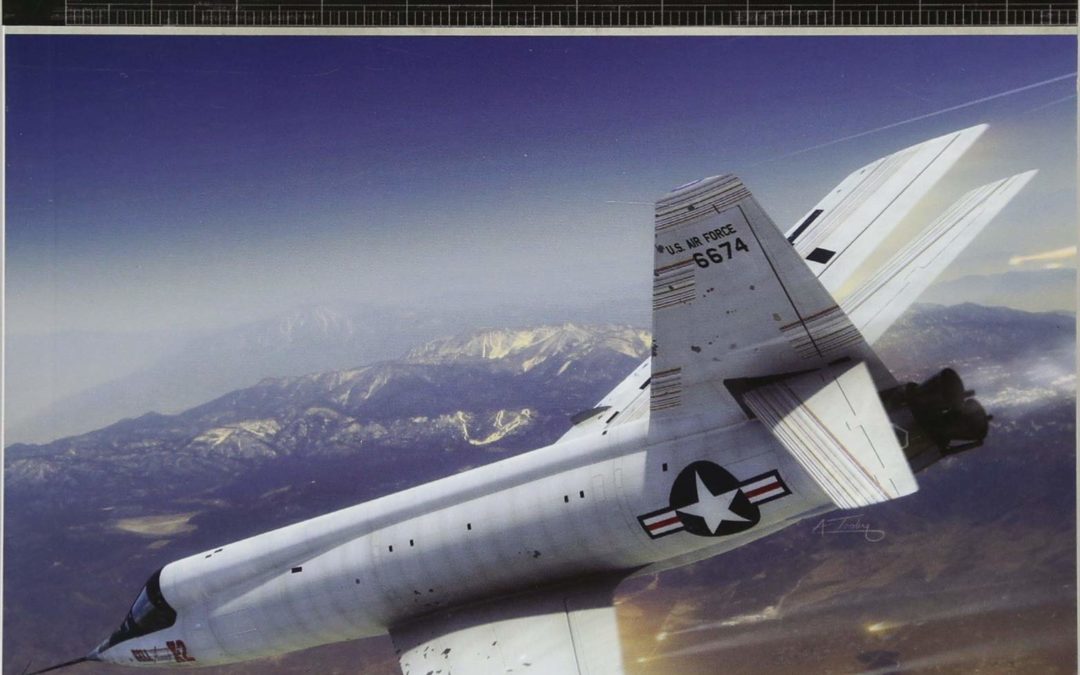
Even before the spectacular success of its X-1 rocket-powered aircraft in breaking the “sound barrier,” the adventurous Bell Aircraft Corporation was already pushing ahead with a parallel project to build a second aircraft capable of far higher speeds. The X-2 (or Model 52) explored the equally uncertain technology of swept-back wings. Now common in modern conventional fighter aircraft, the Bell X-2 was revolutionary in using this type of airframe to probe Mach 3 and research the effects of extreme aerodynamic friction heat on airframes.
Although both X-2s were destroyed in crashes after only 20 flights, killing two test pilots, the knowledge gained from the program was invaluable in developing aircraft that could safely fly at such speeds. Using stunning artwork and historical photographs, this is the story of the plane that ultimately made the Lockheed Blackbird and Concorde possible.
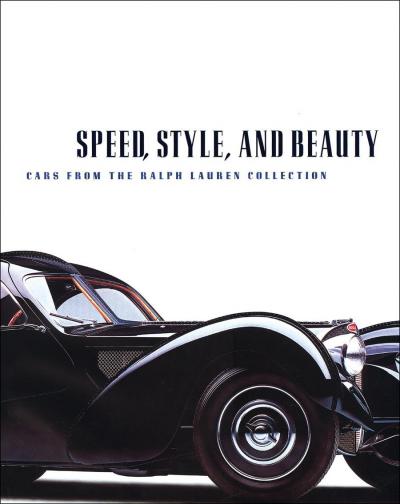
Bugatti and Bentley, Alfa and Aston, Mercedes and McLaren-these are not merely cars, they are some of the most exquisite automobiles ever assembled, selected by Ralph Lauren, one of the foremost designers of our time. This breathtaking volume features 29 of these wonders-from such unparalleled masterpieces as the 1930 Mercedes Benz “Count Trossi,” the 1938 Alfa Romeo Mille Miglia, and the 1938 Bugatti Atlantic Coupe to marvels from Jaguar, Aston Martin, Ferrari, Porsche and even a Ford “Woody”-each of these vehicles is lovingly photographed and presented with authoritative elegance. Complementing the images are sketches of these and other cars-rarely seen drawings that give insight into the conceptual and development stages of the automobiles. Now in its fourth printing, Speed, Style, and Beauty is the first book on cars to center its discussion squarely on the car’s role as an art object. The 29 chapters, by two of the best known and most respected authors writing about cars today, gives the indispensable background information, but also approaches the cars the way an art historian would approach fine sculpture-treating them as consummate works of decorative art for the modern age. With over 160 color images by world-renowned photographer Michael Furman, plus an introductory interview with Ralph Lauren who discusses the links between the cars and his overall design philosophy, this is an elegant yet informative book that will delight both the rampant car enthusiast and aficionados of great design in any form. The sleekly curved chrome and steel of these timeless dream machines conjures the glamour of the 1930s, the opulent ease of the 1950s and the charged excitement of the 1980s-the perfect marriage of speed, style and beauty.

Continuing the popular Haynes Owners’ Workshop Manual space series, which currently comprises Apollo 11 Manual and NASA Space Shuttle Manual, this unique book provides an insight into the only car ever built to be driven on the surface of another world. With a Foreword by the first Apollo astronaut to drive it on the Moon, Dave Scott, and published to coincide with the 40th anniversary of mankind’s final drive on the Moon in December 2012. The book is part mechanical guide, illustrated with many of the technical drawings from the time, and part narrative-driven story of engineering ingenuity and human triumph. It draws on the rich NASA photographic archive and the complete transcripts of the crews’ reaction to driving across the Moon, which the authors have an un-paralleled knowledge and experience of working with.








